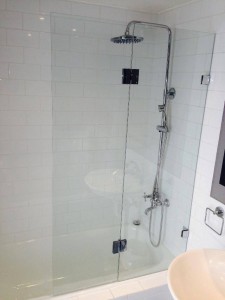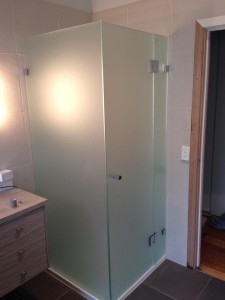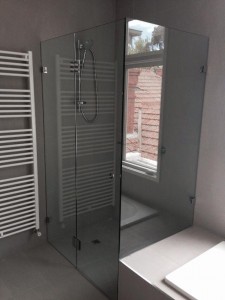Glass existed even before we humans learned how to make it. As old as the earth itself, natural glass is formed when super high temperatures combine with rocks. This can be caused by meteorite strikes, lightning, and especially during volcanic eruptions. The intense high heat generated during these events causes rocks to melt and fuse together. Glass is formed when the melted rock cools off rapidly. The most common of these natural glasses is obsidian, which ancient humans used to make tools and weapons.
People didn’t learn how to make their own glass for thousands of years, and it was even longer before they acquired the skill of making useful glass containers with molds. These early attempts took a long time, and the results were generally somewhat clumsy. The first real breakthrough in glassmaking probably took place around 30 B.C. in ancient Phoenicia. This was the art of glassblowing.
Glassblowing made it possible to create pieces that were both beautiful and useful – and in endless variety of shape and colour. Suddenly it was easier and less expensive to produce glass objects – and it was faster than the old methods, too. Glassblowing techniques spread quickly across the Middle East, North Africa and Europe. For the next 2,000 years, glassblowing reigned supreme as the method of choice for glassmakers.
During this time the glassmaking art was continually refined. Constant experimentation with the “recipes” for colored glass yielded better and more spectacular results, until the next big breakthrough came some time around 100 A.D. in Alexandria, Egypt. Artisans there began adding manganese oxide to their mixtures, and the glass produced in this process came out nearly transparent.
As you might expect, this led directly to the use of glass for windows in the most important buildings of the empire. Be assured, this was not like the window glass Melbourne residents enjoy today! It was extremely thick and cloudy, and somewhat uneven. But it kept the wind and rain out, and let the light in.
Sadly, as Europe entered the Dark Ages, the art of glassmaking practically disappeared from the continent. But glassmaking continued on in the Middle East, Asia and Africa. Arab artisans, especially those in Syria, distinguished themselves as the finest glassmakers in the world for several centuries. They developed sophisticated techniques for glass cutting, colouring, gilding, and enameling.
As the Dark Ages faded slowly toward enlightenment, glassblowing again became popular in Europe. The glass produced in Venice, Italy, made the Venetians world famous as early as the 14th century. These respected artisans made glass so clear that by the 15th century they could make glass lenses – making possible the telescope, the microscope, and eyeglasses.
With the Industrial Revolution in Europe and the United States, innovations in glass and glazing techniques came fast and furiously. Mass production brought great improvements in the quality and consistency of glass products. By the early 1900’s, safety glass and Pyrex had been invented, and in 1959 in England, the float process for making sheet glass was developed.
To learn about the finest glass services Melbourne has to offer, contact the specialists at Matthew’s Glass and Glazing! We’re up on all the latest innovations.
Keep updated with the latest deals and promotions




